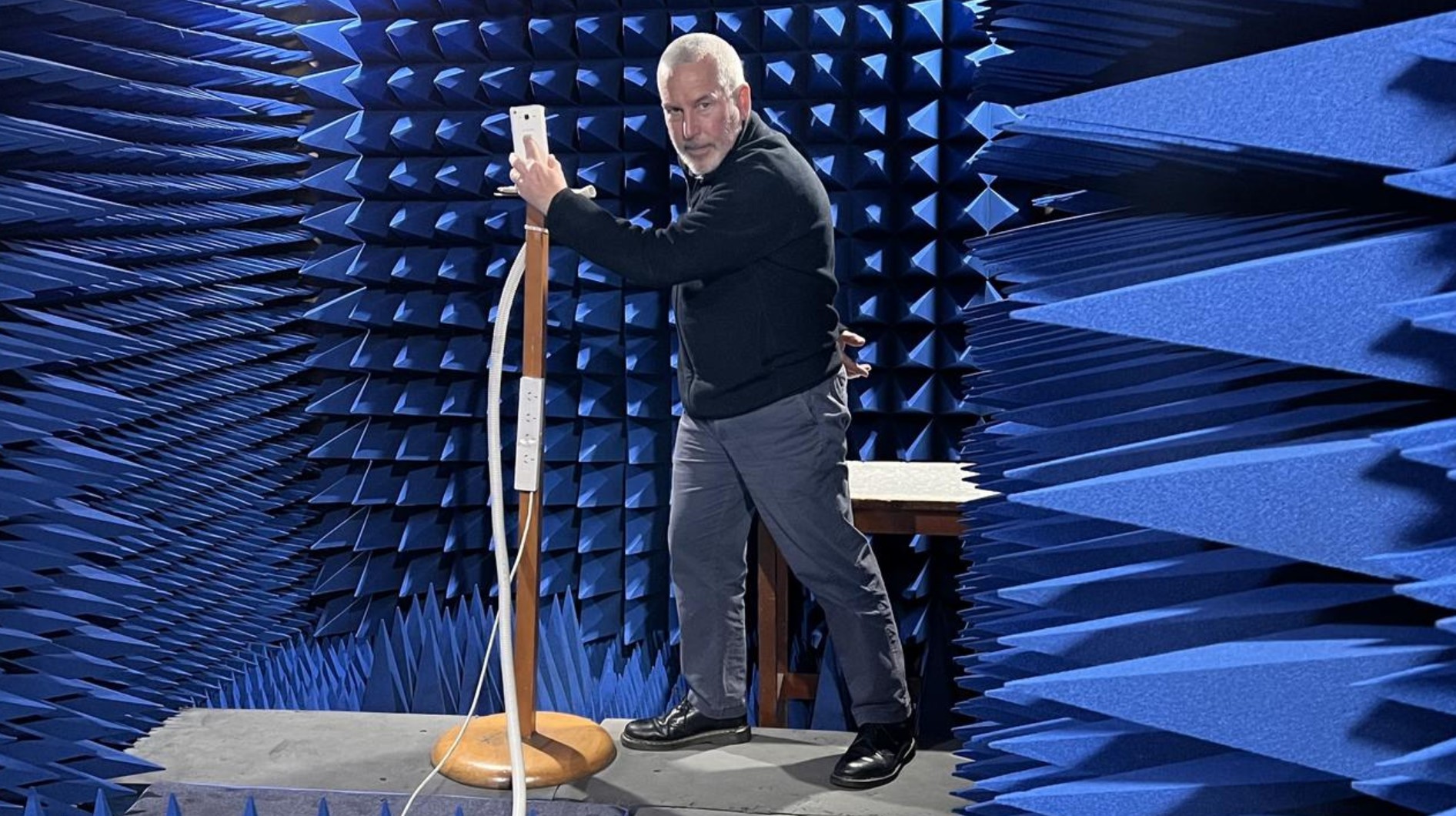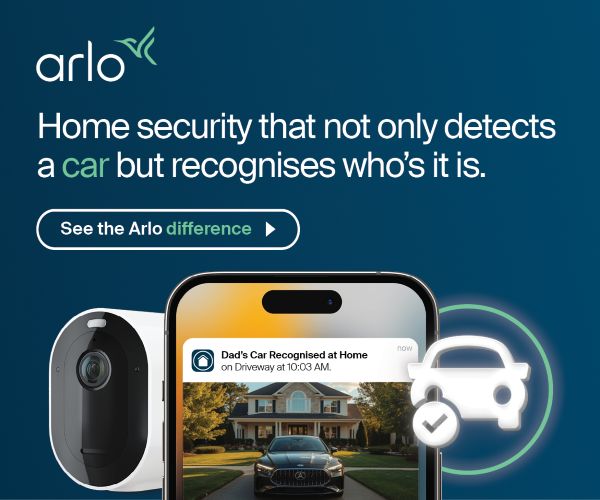Telstra Blue Tick is touted as an objective and independent testing of a phone’s ability to receive a signal in rural and remote areas with limited tower coverage. It has been a subject of considerable debate in Reddit and Whirlpool forums. As our insightful readers have often pointed out, it usually does not reflect real-world use.
The Telstra Blue Tick methodology is ill-defined and done in a test lab – not in real life. It is like proving we all like vanilla ice cream when it is the only one ever offered to taste.

We did lots of digging and found that until recently, it was only tested on the 3G network – let’s face it, any phone has decent 3G reception. Now Telstra et al. are closing that network, compromising 000 calls and rural and remote phone use.
It is now tested on VoLTE (Voice over LTE) using band 28/700MHz. This is the lowest frequency band that has the strongest signal over the longest transmission distance to and from one tower. It can typically transmit up to 20km—20% further than Band 5/850MHz and many kilometres more than higher-frequency 4 and 5G bands. The higher the frequency, the shorter the signal distance and strength.
Let’s face it: every phone we have tested has a reasonable band 28 single-tower phone reception strength measured in -dBm and power in femtowatts (fW) or picowatts (one pW is 1000 fW). I cannot recall any of the more than 200 phones we have reviewed failing Telstra’s wholly inadequate single band/tower test.
Telstra Blue Tick does not represent real-world use
In my opinion, Blue Tick has never lived up to the reality. Many readers have proven that time and again.
It is a simple marketing tool that a smartphone vendor pays for. We understand that it costs a motza to have a phone listed as a Blue Tick.
You will notice that Samsung and Telstra devices are the only brands listed now.
In our discussions with all other vendors, they regard Blue Tick as a waste of money paid to Telstra for a ‘nothing’ meaningless requirement.
CyberShack Testing Methodology – simple, accurate and independent
We use a Boost sim on the Telstra retail network. This is the same network that Telstra uses – not the inferior wholesale network it sells to Woolworths, Aldi, etc. Read Telstra’s Retail Vs Wholesale mobile plans – the catches you need to know.
We go to a known ‘black spot’ (1-2 bar) on the lee side of Blackwall Mountain. A Telstra/Optus/Vodafone tower is <500m away on the opposite side, facing Woy Woy to the north (Central Coast). There is an Optus (3G/900/1200, 4G+(700/900/1800/2100/2300/2600) and Telstra (3G/850, 4GX/700/1800) on top of The Mantra Resort about 2km line-of-sight to the south.
We have used the same location, test regimen, and test software since 2018, and the results are consistent. In addition, we also have new software that takes snapshots over about 10 minutes to reduce environmental variables and report the minimum, maximum, and mean results.
We also use a control group of phones to ensure environmental issues don’t affect the results. Our current reference 4/5G devices include the OPPO Find X5 Pro 2022 (Qualcomm SD8 Gen 1), the Samsung S24 Ultra 2024 (SD8 Gen 3—we used the S23 Ultra SD8 Gen 2 before that), the Google Pixel 8 Pro 2024 (G3 Tensor—essentially a Samsung Exynos 2400), and the OPPO Reno 10 2023 (MediaTek 7050).
The control group covers the three main modems: Qualcomm, Samsung Exynos, and MediaTek. Without fear of contradiction, Qualcomm is the only one that can find and use all four towers. Samsung Exynos and MediaTek are getting better at finding the main tower at higher picoWatt strengths but have NEVER seen the other four towers at usable strengths.
5G – when you can get it (and that is not often)
We do not focus on 5G as so few readers can reliably get it, falling back most times to 4G. When it is critical to test 5G phone signal strengths we use a drive-by method starting at Kariong, where there is a massive 5G tower servicing most of Gosford and drive to East Gosford.
CyberShack’s view – Telstra Blue Tick is marketing and best ignored.
Looking at the current Telstra Bluetick list, our testing corroborates that the Samsung Galaxy S24 Ultra using a Qualcomm SD8 Gen 3 is suitable for cities, suburbs, regional, and possibly remote areas. However, it did not have as strong a signal strength as the previous S23 Ultra with the SD8 Gen 2.
We totally disagree that the S24 and S24+ are suitable for regional and remote areas. These use the Samsung Exynos 2400 SoC (similar to the Google Tensor G3), and Samsung would only release these pre-release units for review if we agreed not to test phone signal strength (we have that in writing). Similarly, our tests show city and suburb coverage only for the following Samsung 2024 so-called ‘Blue Tick’ phones
- Xcover7 uses a MediaTek Dimensity 6100
- A55 5G 2024 uses an Exynos 1480
- A35 5G 2024 uses an Exynos 1380
- A15 with a MediaTek Dimensity 6100+
- S23 FE 2024 uses an Exynos 2200
We are not saying these phones are deficient in any way – perfect for those living in cities and suburbs with decent tower coverage. But they are not regional and remote-use devices unless you have a nearby tower.
Our rationale is simple yet effective. We believe testing in real-life scenarios, particularly in black spots, provides the most accurate assessment of a phone’s reception capabilities. So far, our approach has not led any reader astray.
All we want is for Telstra to get off its lazy backside and test phones out of the lab. Go to the worst reception spots in Australia, the local blackspots, and see which can get a signal. That would involve some effort, of course, and the admission that its Blue Tick is nothing more than a thinly disguised marketing ploy to sell more phones.
At the end of the day, it is all about Telstra and vendor marketing and less about any sort of real science that gives the customer an informed choice. There is no refund if your Blue Tick phone does not do what you need.
Telstra is inivted to respond.











4 comments
Paul H.
Excellent information Ray. The blue tick thing has always been a bit suss. And it’s awesome that your reviews are the only ones that cover phone reception these days.
How about revealing the best phones for remote use? I see that you give the thumbs up to Qualcomm devices. But a list, however short, of the best relatively recently released phones would be great.
Ray Shaw
Hi Paul
I am flat out with reviews for the next few months – everyone wants reviews pre-Xmas. I will try to get to your suggestion earlier – perhaps with the December best smartphone update. Yes Qualcomm SoCs and modems generally provide the best phone reception as they are designed to find multiple towers and hand off seamlessly. But some makers have better antenna implementations (or worse) that also affect signal stability. MediaTek has heard the message and I am looking forward to seeing if their 2025 Dimensity series is any better. Samsung have ignored the message completely and its Exynos modems consistently perform far worse. Google Pixel uses Exynos modems as well.
Karen Guy
Hello. Great site thankyou and now have it bookmarked.
I just finished reading the is Telstra blue tick article truthful.
So bad the fact, that I’m not surprised by the findings. People i know quit telstra after privatisation.
I’m in the position of having to get a new phone before well before Optus shuts 3g down. Re no specials close to time no doubt.
I’ve been with Amaysim forever. On prepaid. In recent years I found out that unless you’re on a plan with the big telcos, your pretty much shunted to the slow lane.
I’m a low end user of all things internet, so not having the best speed & reception hasn’t been too much of a pain.
But whether a combination of other reasons or not, since Optus “took over” Amaysim seems the signal for me at home has deteriorated.
(As has ABC TV signal over the last few weeks, every time I have to spend 20min moving the set top box antenna, from where it got reception previous night, barely staying calm & it may hold for a few minutes to a few hours.. Something to do with ABC & supposedly SBS disruption, under Optus satellite changes. Yet SBS along with all but channel 7 are fine, no matter what crazy position I’ve finally got ABC to stay! I don’t want to stream everything TV, im poor, can’t afford NBN, or wireless outdoor antenna set up stuff. My pre paid Amaysim data plan is all i need & can’t afford bigger data plan! Guess I’ll have to get a tv booster for ABC or something, I dunno. Sick of increasing communication hassles).
I have a Moto g30, custom apparently. But although it has Volte lite, 4g, I am “near” a black spot, and although I can see towers in the opposite direction of the black spot, too far away. Basically when online on the phone, it’s pretty much 50% hooked in 3.5g i think it is… H.
And ironically, H often loads pages a bit faster. It’s getting all too much for just basic things in life. If you’re well off you just go get the best expensive kit & caboodle. 3g should be not be stopped. At least for longer, re rural.
Disgraceful.
A Harvey norman staff person told me Stellordoradus antenna in mobiles is the best for rural & regional. That the Samsung S22s would be the best.
I noted you said S23…etc…was better than the new S24..etc!
Can’t find any search for if that antenna is in any mobiles in Oz! Only the makers site. Not been down that rabbit hole.
Thing is i simply can’t afford new Samsung phones even at the budget one of ? around $680 i think.
One question if you have time to respond. (At least I have better info re your article now if you don’t, no worries, this is tedious stuff). And bearing in mind I read prepaid telstra & so that would be the same under Optus/Amaysim means less quality speed & reception……. Would the older Samsung S23… or even S22s do the job for me? And there seem to be so many models under each number, the right models are clearly a good deal important!
I’ve n not looked at used S23 or 22s as yet. So tried of research & knowing much of it nonsense anyway.
Despite loathing Google world domination, I am used android & don’t want to go down the iPhone rd. Have had Nokia & LG in the good ole elegant android phones days.
Given up on the hopes for a good camera. Not like i print anything.
I’m located just 15min outside Lismore NSW, up on a ridge. Renting on a rural property on Dunoon rd. Sure, maybe the old mango orchard & big farm sheds lessen my signal for the phone. But yeah, not too badly until recent times. Just so mad now i have to sort ABC TV super hassle. So over this baubles & bubbles changes every few months it seems nowadays.
Sorry for the long & tedious message & you may not even actually answer queries ha. All good. At least I now have…go for Qualcomm & those Samsung to research if won’t be too old in year! As for the Stellordoradus antenna best of, other than in some or all Samsung, let alone any other brands…. Any idea is appreciated. Cheers & thanks. Karen
Ray Shaw
Hi Karen
Stella Doradus is NOT the answer. As far as we can find it is not licensed for use here and is for ‘expensive’ commercial/industrial use in Europe/UK. The whole topic about phone signal repeaters is for another day. Rule #1 – look for a phone with a Qualcomm Snapdragon – SD6, 7 or 8. If you don’t need 5G (and you don’t) then a 4G phone is fine. The lowest cost phone I can recommending for remote use is the $449 Motorola g84 (SD 695 5G – buy certified Australia please from Harvey Norman or JB) https://cybershack.com.au/reviews/moto-g84-5g-how-does-motorola-do-it-smartphone-review/. It has excellent reception signal strength.
Here is a link to the tower report for Dunoon Road https://www.rfnsa.com.au/site-list?csrfmiddlewaretoken=mjCFFnBNcYesUeNvLZZf8bAn2TTSoNGG2V29XSHvfggXEwpNNQPoYXMkgqCEaMCN&nearby_latitude=-28.65609&nearby_longitude=153.3424683&nearby_address=Dunoon+Rd%2C+Dunoon+NSW+2480%2C+Australia¤t_latitude=-33.882112¤t_longitude=151.1653376¤t_address=18+John+St%2C+Leichhardt+NSW+2040%2C+Australia&statuses=Active&statuses=Proposed&site_count=&search_criteria=Dunoon+Road%2C+Dunoon+Lismore%2C+NSW%2C+Australia&search_type=search_near You have towers at Modanville (2480049 Telstra 4GX), Dunoon Sports Ground (24780025 Optus 4G+ and Telstra 4GX and 5G), Channon Craft Market (2480025 Telstra 4GX) and Rainbow Temple (2480030) Optus 4G+/5G) so you should be fairly well catered for. I suspect it may be mountains terrain that is blocking signals. Let me know more by emailing [email protected] and I will help if I can.